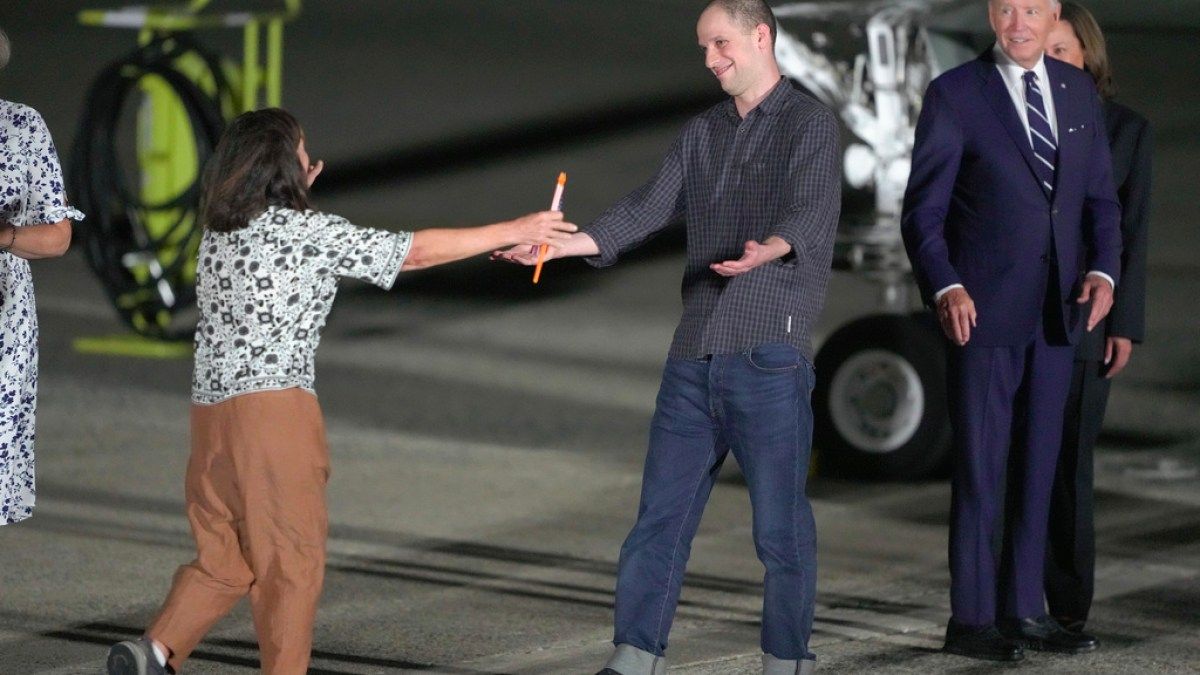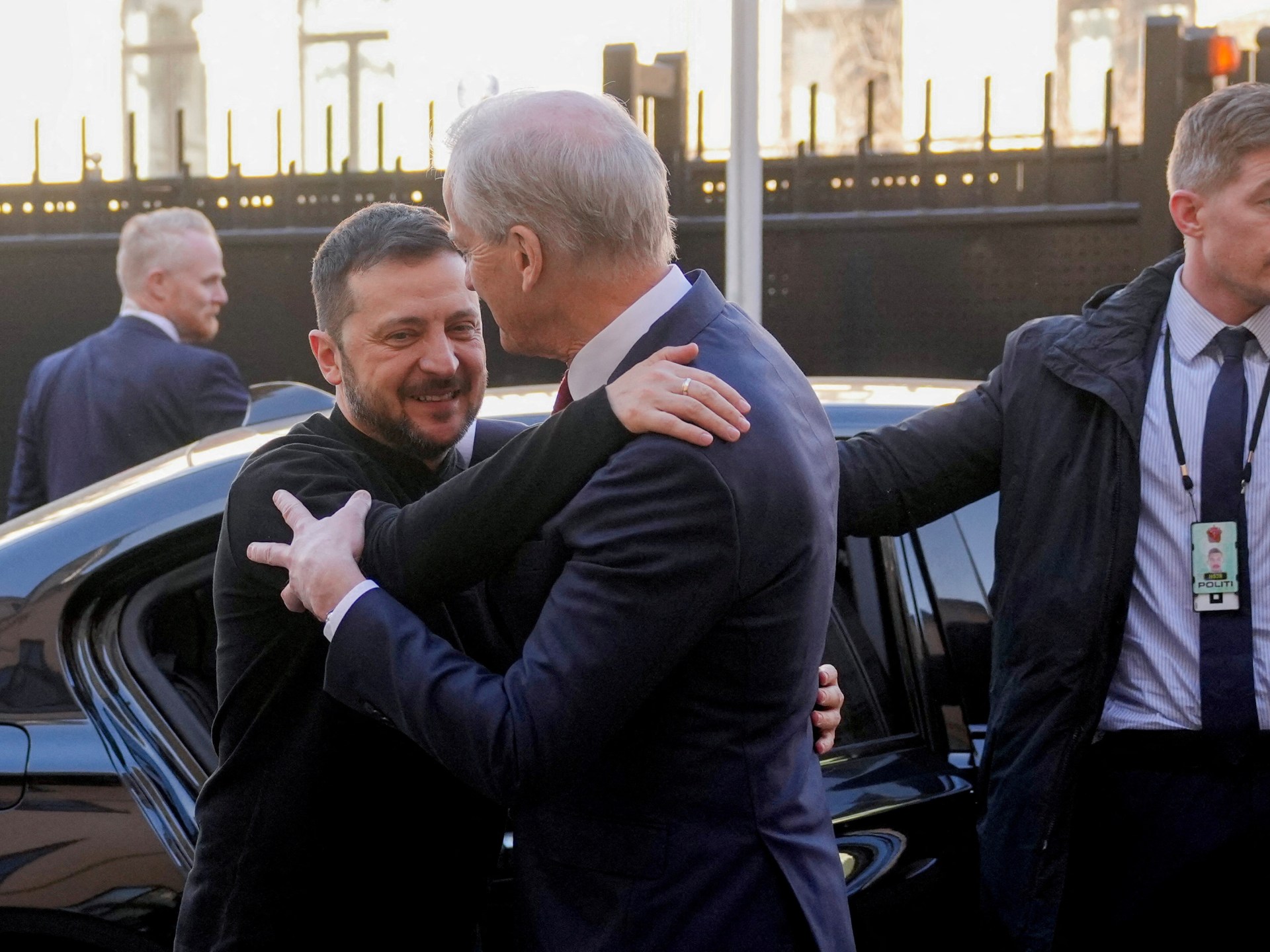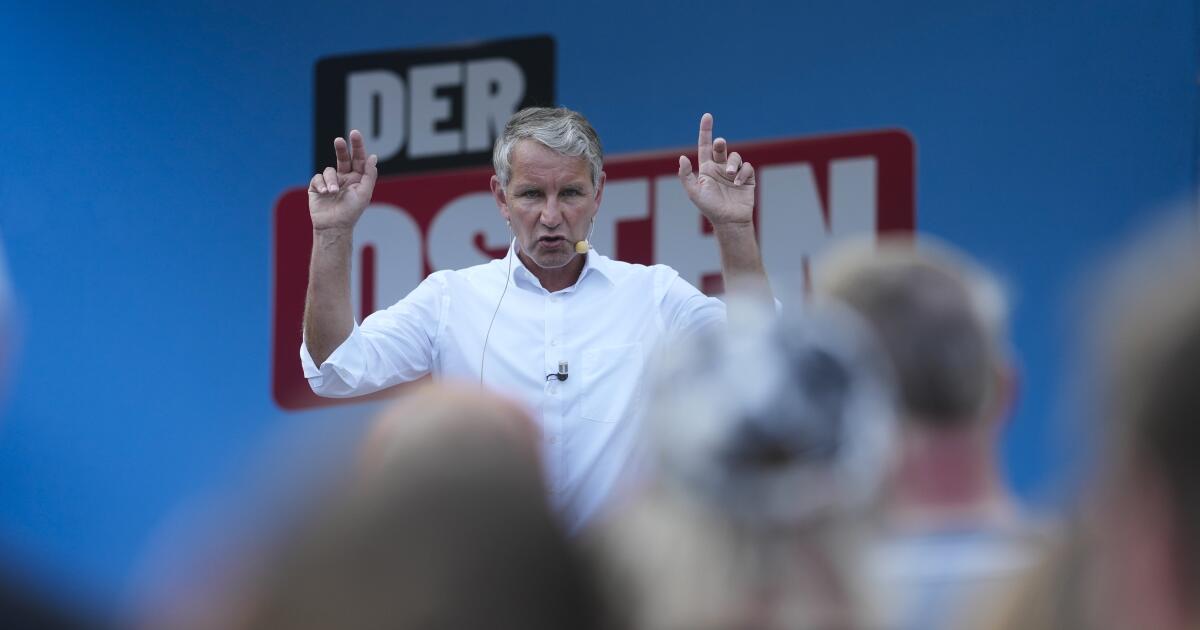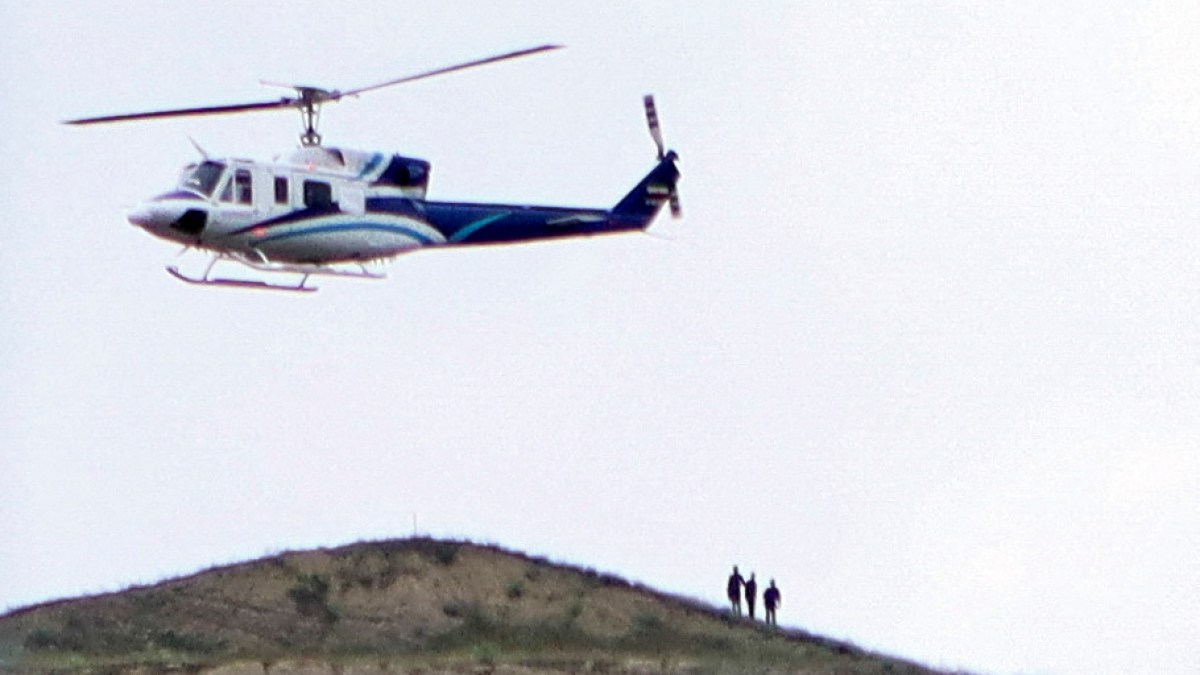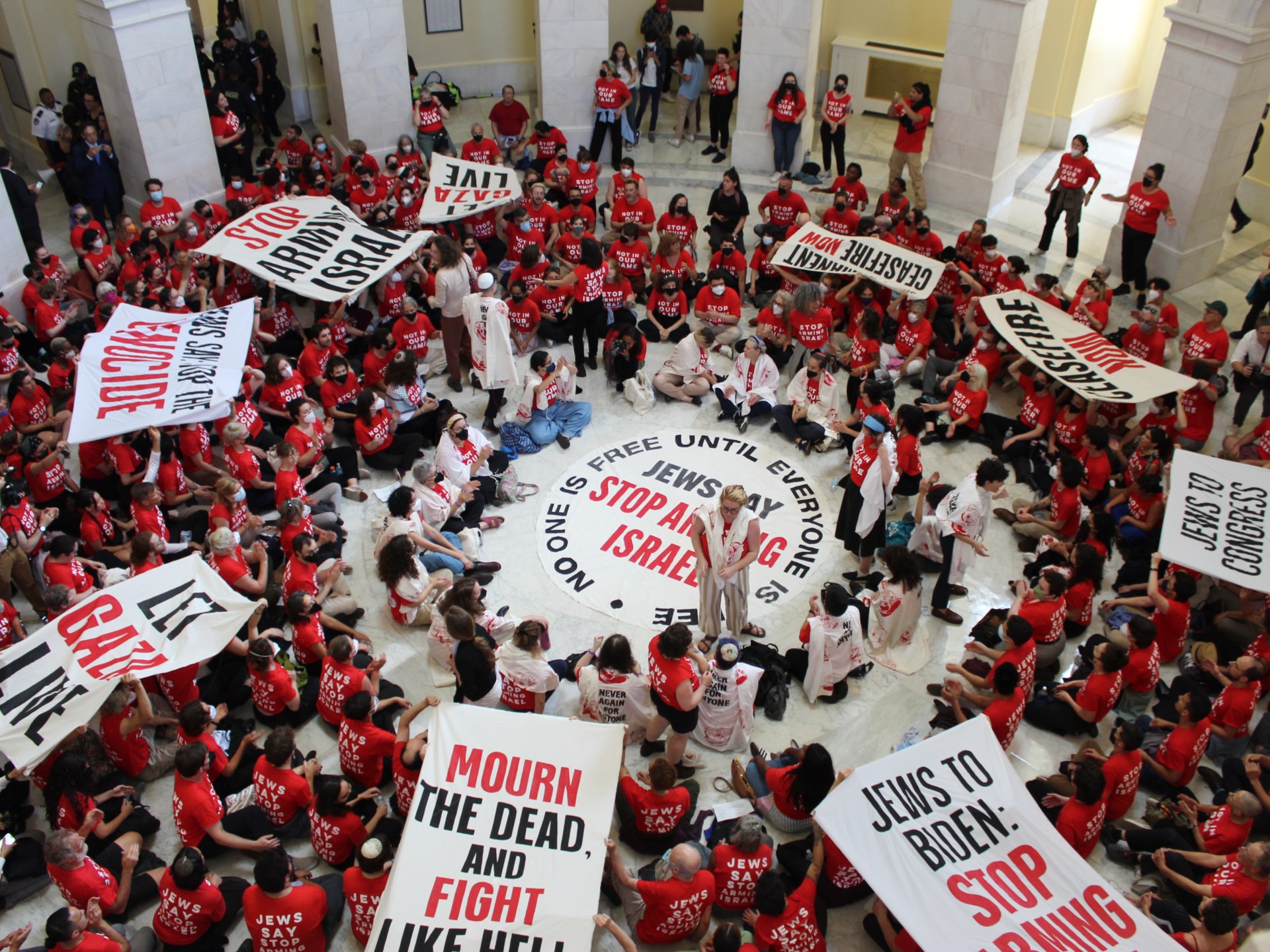This week's prisoner exchange between Russia and the West was a historic moment, the largest exchange in the post-Soviet era, involving 24 prisoners.
Behind-the-scenes negotiations had intensified in recent months with difficult concessions demanded by the United States, Russia, Germany and three other European nations as international tensions over the war in Ukraine reached a fever pitch.
US President Joe Biden described the deal brokered by Ankara as a “diplomatic feat.”
Russia has released 16 people, including US citizens Evan Gershkovich, a Wall Street Journal journalist, and Paul Whelan, a security executive and former Marine.
In return, the West allowed eight prisoners to return to Russia, including Vadim Krasikov, who was sentenced to life in prison by a German court in 2021 for killing a former Chechen rebel in Berlin, allegedly on Moscow's orders.
Does the exchange herald a thaw in relations between Russia and the West, particularly with regard to the former's war against Ukraine? Not likely.
Asked whether negotiations with Moscow laid the groundwork for peace talks, US national security adviser Jake Sullivan said the White House did not see a link between the two interactions.
As can be seen in our roundup of the largest prisoner exchanges in recent history – disparaged by some as “hostage diplomacy” – exchanges can often pave the way for future releases, but their significance is often limited.
February 1962 | 'Bridge of Spies'
The first major prisoner exchange between the Soviet Union and the US took place at the height of the Cold War at the Glienicke Bridge, also known as the “Bridge of Spies,” which sits on the edge of Berlin and marked the border between East Germany and West Berlin.
The deal saw KGB spy Rudolf Abel walk into East Germany, crossing paths with American pilot Francis Gary Powers on his way to the West.
Abel, a British-born Soviet intelligence officer, had worked for the KGB in New York. He served four years of a 30-year prison sentence before being exchanged.
Powers was piloting a U-2 spy plane when his aircraft was shot down in 1960 over Russia's Ural Mountains region. He parachuted to safety but was captured by the Soviets and later convicted of espionage.
The exchange was a significant moment and offered a model for future exchanges between the Soviets and their Western rivals.
But the Cold War would continue for almost three more decades.
May 1985 | The Jibril Agreement
The Jibril Agreement between Israel and Palestine is named after Ahmed Jibril, leader of the Popular Front for the Liberation of Palestine-General Command (PFLP-GC).
This agreement, which took almost a year to finalize, allowed the exchange of three Israeli soldiers who had been captured by the group in Lebanon for 1,150 prisoners, including Kozo Okamoto, a member of the Japanese Red Army (Nihon Sekigun) who participated in the attack on Lod Airport (Ben-Gurion International Airport) in 1972.
While Jibril was a landmark deal, it was by no means the largest.
Just two years earlier, Israel had exchanged more than 4,500 Palestinian prisoners for six Israeli soldiers held captive by the Palestine Liberation Organization.
In 2011, Israeli Sergeant Gilad Shalit was exchanged for 1,027 Palestinians, including Hamas leader Yahya Sinwar, who was released after more than 20 years in prison and is now considered one of Israel's most wanted men for his role in the October 7 attacks that sparked Israel's war on Gaza.
June 1985 | The largest agent exchange
This largest traffic of government agents in history brings us back to the Glienicke Bridge.
Marian Zacharski, a former Polish intelligence officer convicted of spying against the United States, was exchanged along with three other Eastern Bloc agents for 23 Westerners jailed for espionage in Warsaw Pact countries.
Perhaps unsurprisingly, given their role as agents, the identities of the Western prisoners were not revealed, but one of the 23 identified himself as Gerhard Suss on West German television and said he had spent 13 years in prison and had been tortured by his jailers.
The exchange came after three years of negotiations.
September 1986 | Exchange between journalists and spies
In a case reminiscent of Gershkovich, Nicholas Daniloff, a US News & World Report correspondent in the Soviet Union, was replaced by Gennadi Zakharov, an employee of the Soviet mission to the United Nations.
Daniloff had been arrested and charged with espionage by the KGB in 1986. He spent less than a month in prison before being allowed to leave the Soviet Union without trial.
The administration of then-US President Ronald Reagan believed he had been arrested in retaliation for the arrest of Zakharov in New York three days earlier.
The two men were exchanged after weeks of negotiations.
July 2010 | The exchange of the 'Illegal Program'
In 2010, 10 Russian agents detained by the United States were exchanged for four prisoners held in Russia.
The Russian agents were part of the so-called Illegals Program, a network of sleeper agents launched by Russia's Foreign Intelligence Service during the Cold War and revived by Russian President Vladimir Putin.
Unmasked by the FBI, the group's members included Anna Chapman, who had been working undercover in Manhattan real estate and later achieved celebrity status in her native Russia.
Russia has released Sergei Skripal, a colonel in its military intelligence service who was convicted of high treason for working as a double agent for Britain.

Eight years later, Skripal and his daughter, Yulia, were victims of an attempted murder by poisoning in Salisbury, England. They survived, but the incident revealed that even after being exchanged, freed prisoners can sometimes remain in the line of fire of their former captors.
May 2014 | Bowe Bergdahl
In 2014, the Taliban in Afghanistan released US Army Sergeant Bowe Bergdahl in exchange for five Taliban members held at Guantanamo Bay. Bergdahl had been held captive by the Taliban for five years.
His release sparked outrage among Republicans like then-Senator John McCain, who said at the time that releasing “wanted war criminals” in exchange for the soldier was a mistake.
Bergdahl was welcomed home, but public opinion turned against him when it emerged that he had deserted the U.S. military in 2009 and left his post in Afghanistan, leading to his capture. In 2017, Bergdahl pleaded guilty to desertion and was dishonorably discharged.
Former US President Donald Trump repeatedly alluded to the issue at the time, saying defectors should be shot.
April 2022 | Trevor Reed
Trevor Reed, a former member of the US Marine Corps, was arrested in Russia in 2019 for attacking a police officer, a charge he denied. He was released three years later in exchange for Konstantin Yaroshenko, a Russian pilot and air transport expert imprisoned in the US for drug trafficking.
The timing was noteworthy, coming two months into the war in Ukraine, when U.S.-Russian relations were under considerable strain. Those negotiations laid the groundwork for continued unofficial U.S.-Russian talks on swaps, culminating in the historic release of 24 prisoners this week.
Following Reed's release, Biden said in a statement: “We will not stop until Paul Whelan and others join Trevor in the loving arms of family and friends.”
December 2022 | Brittney Griner
Less than a year after Reed's release, American basketball star Brittney Griner was exchanged for convicted Russian arms dealer Viktor Bout in a high-stakes swap that came amid worsening relations between Moscow and Washington over Ukraine.

Griner was detained at a Moscow airport with vape cartridges containing cannabis oil in her luggage. The player had a U.S. prescription for medical marijuana, but cannabis is illegal in Russia. After 10 months in detention, she was released from one of Russia's most notorious penal colonies.
The negotiations leading up to the swap (at one point, the release of Krasikov and Whelan was also discussed) were complex. Griner and Bout were exchanged at Abu Dhabi's Al Bateen Executive Airport.
September 2023 | US-Iran Agreement
Iran and the United States have a history of prisoner exchanges dating back to the 1979 US embassy takeover and the Tehran hostage crisis after the Islamic Revolution.
Their most recent major exchange came last year, when the arch-foes swapped five detainees each in a Qatari-brokered deal that saw the United States agree to the release of nearly $6 billion in frozen Iranian oil money by South Korea.
Among the Americans were businessmen Siamak Namazi and Emad Shargi and environmentalist Morad Tahbaz. The US said they were all being held in Tehran's Evin prison to gain political influence.
Among the Iranians were Mehrdad Ansari, who allegedly obtained equipment that could be used as military weapons, and Reza Sarhangpour Kafrani, accused by the United States of illegally exporting laboratory equipment to Iran. Tehran denied these accusations.
The exchange was not a harbinger of friendlier relations. Less than a month later, tensions between Iran and the United States escalated when the latter's main ally in the Middle East, Israel, launched its war on Gaza.

